“A guy opens his door and gets shot and you think that of me? No, I am the one who knocks!” — Walter White.
Sometimes I look at my airplane the way Skyler looks at Walt in that scene. On my recent annual it was a crack in the flange of the muffler can. On the 2-4-6 side of the engine, inboard, hairline crack about 3 inches long with the precision of a laser. Could only see it with a mirror and reflected light.
And just like that my annual, which had been routine and painless to that point, got filibustered. It’s repaired now, but it reminded me how airplanes offer so many opportunities for — as Walt would say — someone to knock.
We’ll wrap up this year with data from a Piper Archer, a Cessna 175 Skylark, a Cirrus SR22 and a Cessna 210.
First up is a Piper Archer with a Lycoming O-360 and data from a JPI 900 with a 1 sec sample rate. First a comment on that, and judging books by their covers. When an Archer or a 172 or a Musketeer has signed up for our service, the assumption might be that data will be minimal and probably not include fuel flow. I’m happy to report that assumption is frequently wrong, and we often see top of the line engine monitors in trainers, smaller 2- and 4-seaters and experimentals. Also, the converse is true, and we sometimes see minimal data in twin Cessnas and Barons and recent Malibus (Piper decided that EGT was too easily misinterpreted and just gave pilots TIT – I think they’ve now reversed course on that) and other more expensive airframes. Pleased to shatter another aviation myth.
Back to the Archer. Here’s EGT, CHT and FF from two recent flights.
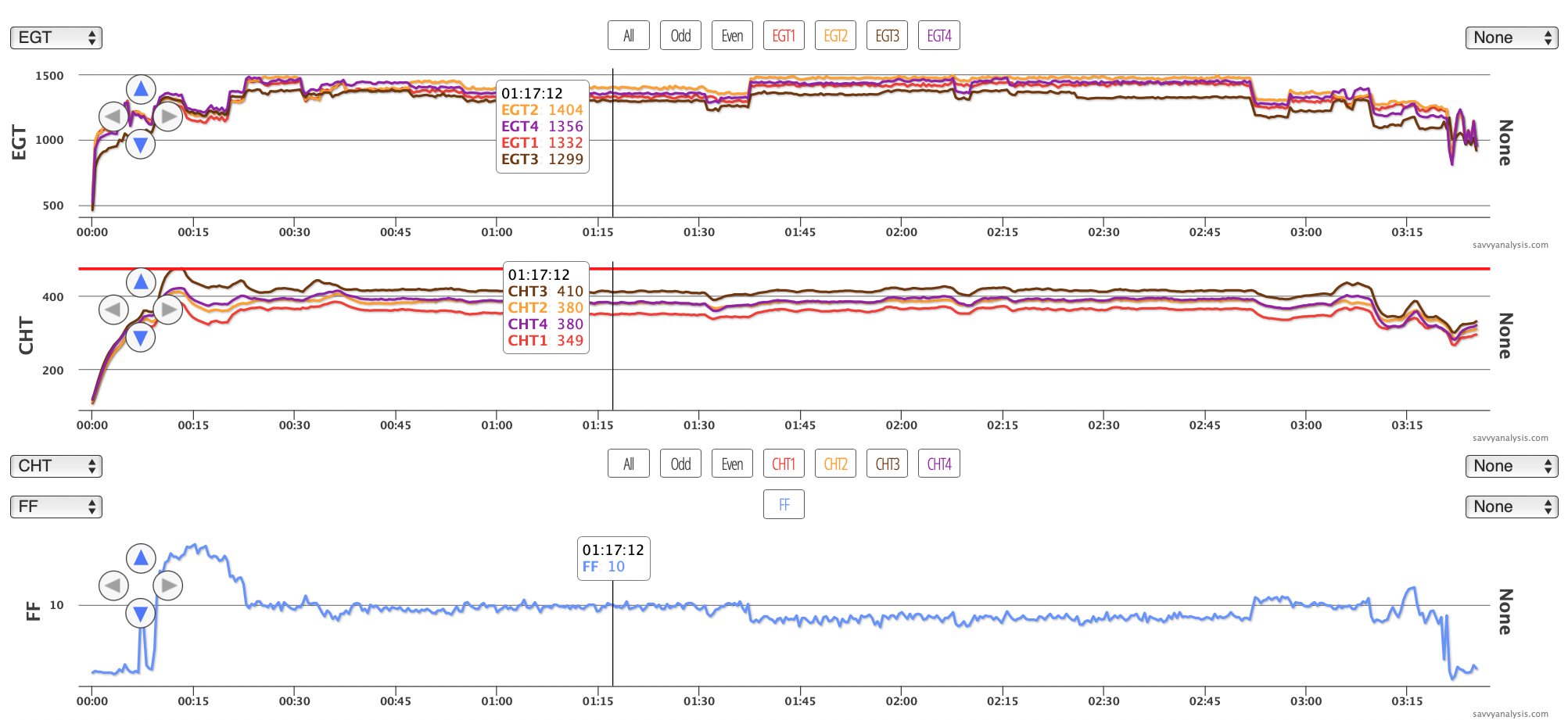
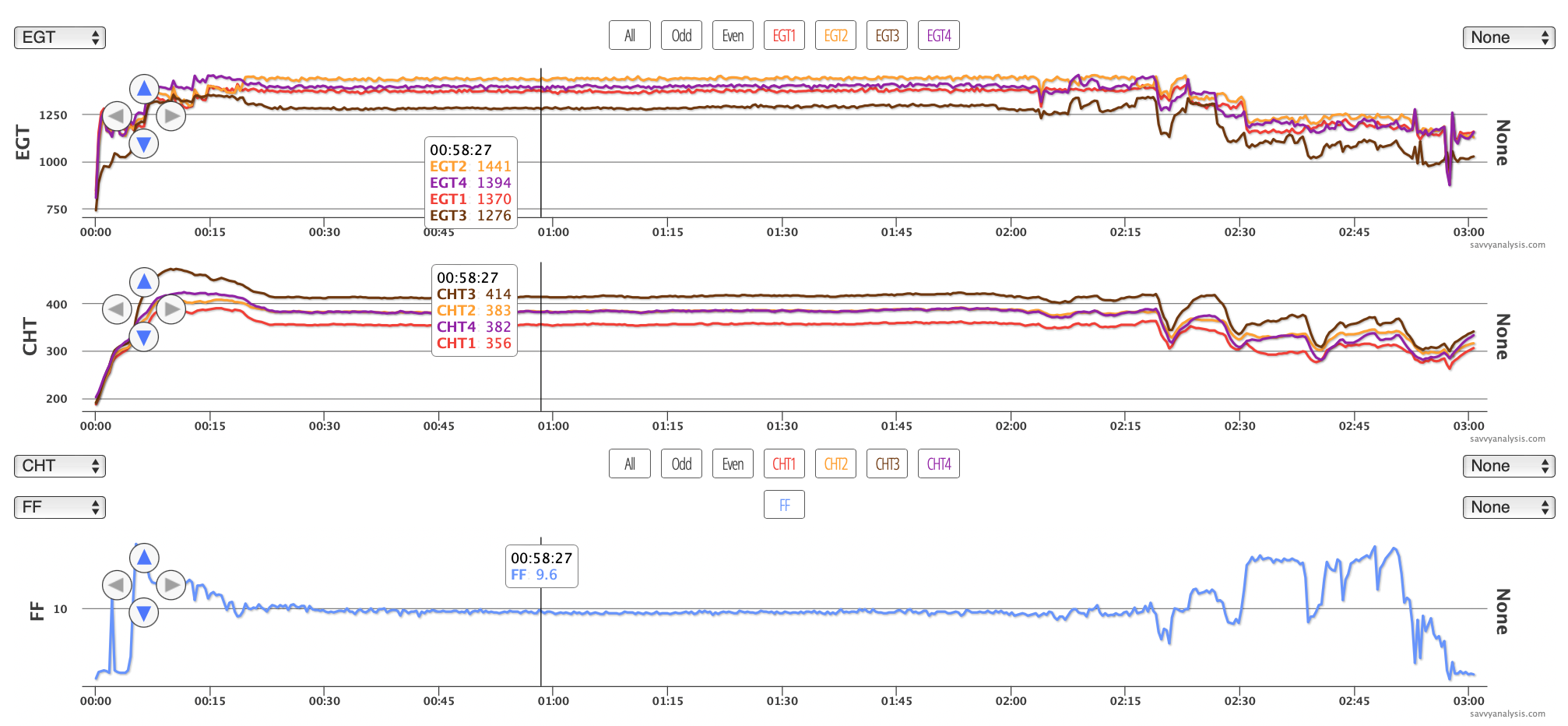
The client noticed a gradual increase in CHT 3 in recent flights, while EGT 3 was moving lower. The list of possible causes would include a problem with one of the piston rings leading to increased friction and reduced power, something wrong with a lifter and the valve train, and maybe the two are un-related – poor cooling is causing the hotter CHT and something else is causing the lower EGT.
Or, using Occam’s Razor to look for the simplest explanation, maybe there’s an exhaust leak sending hot gas into the engine compartment and heating up cyl 3, and EGT 3 is lower because the probe is seeing a mix of exhaust and ambient air. And then our client sent this picture.
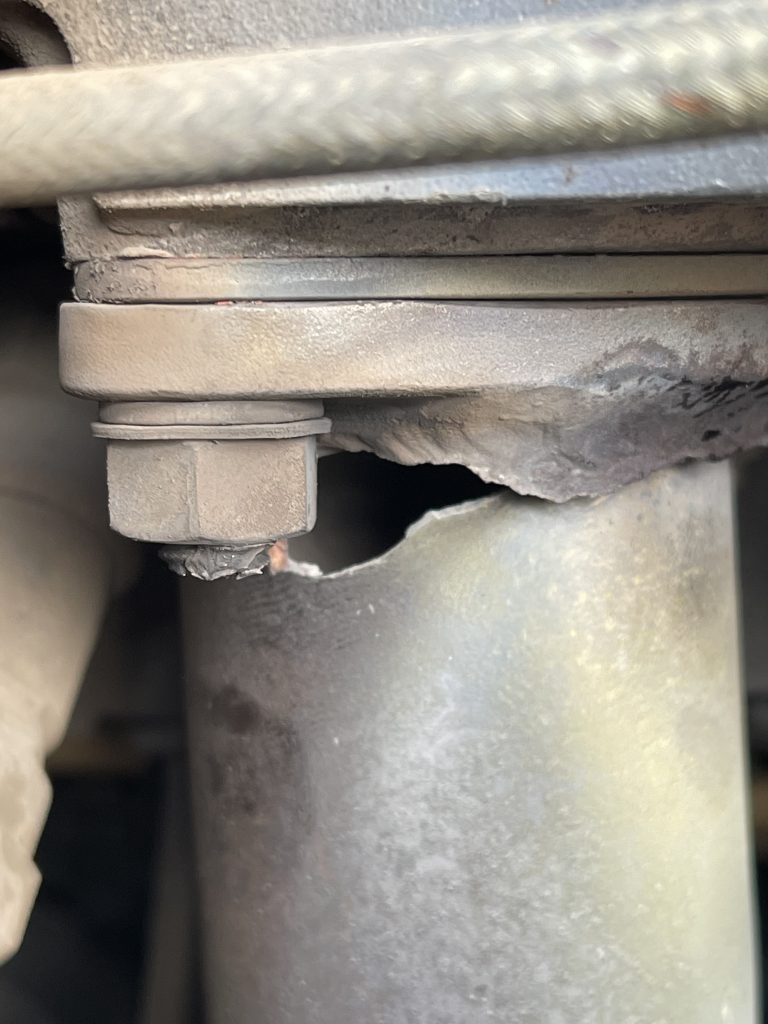
The exhaust manifold had been repaired at the previous annual to fix a crack in the riser for cyl 1. Apparently once that was strong again, the vibrations worked on the next weakest link. The simplest explanation isn’t always the right one, but you can’t rule it out.
Next is data from a Cessna 175 with a Lycoming O-360 (replacing the stock Continental GO-300) and data from a JPI 900 with a 1 sec sample rate. This engine also has a SureFly mag on the L side. Here’s EGT, CHT and FF.
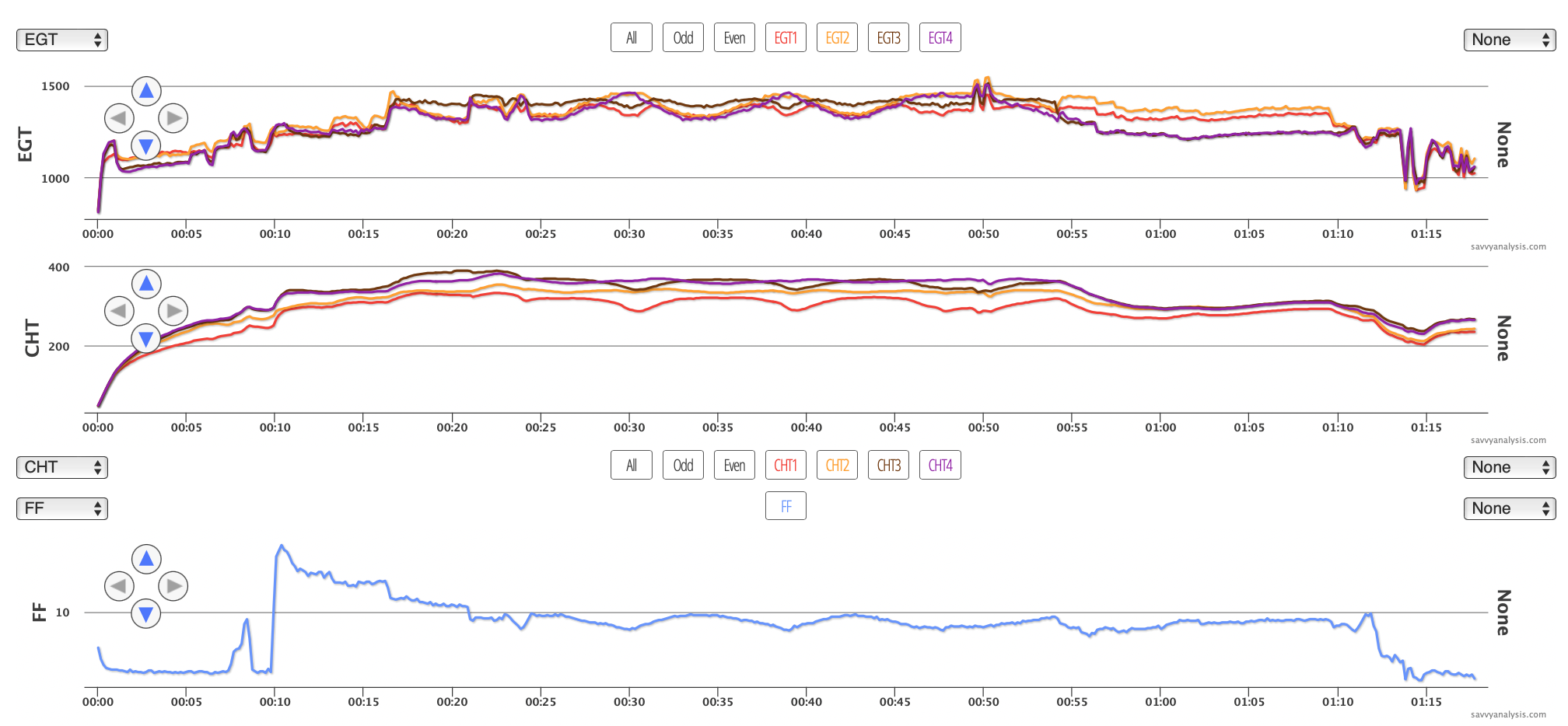
Our client reported —
We experienced severe engine roughness when adding power to level off in the pattern at our destination during this flight. By changing throttle setting, checking carb heat, mixture, ignitions etc we were able to recover smooth operations.
This is data from the test profile flight we asked for to help troubleshoot the problem. There are spots in the data where EGTs 1-3 and 2-4 move together, and spots where 3 is on its own. This one is tricky enough with standard mags, then adding in the variable timing of a SureFly adds another dimension. Zooming into the LOP mag check at the 50 min mark —
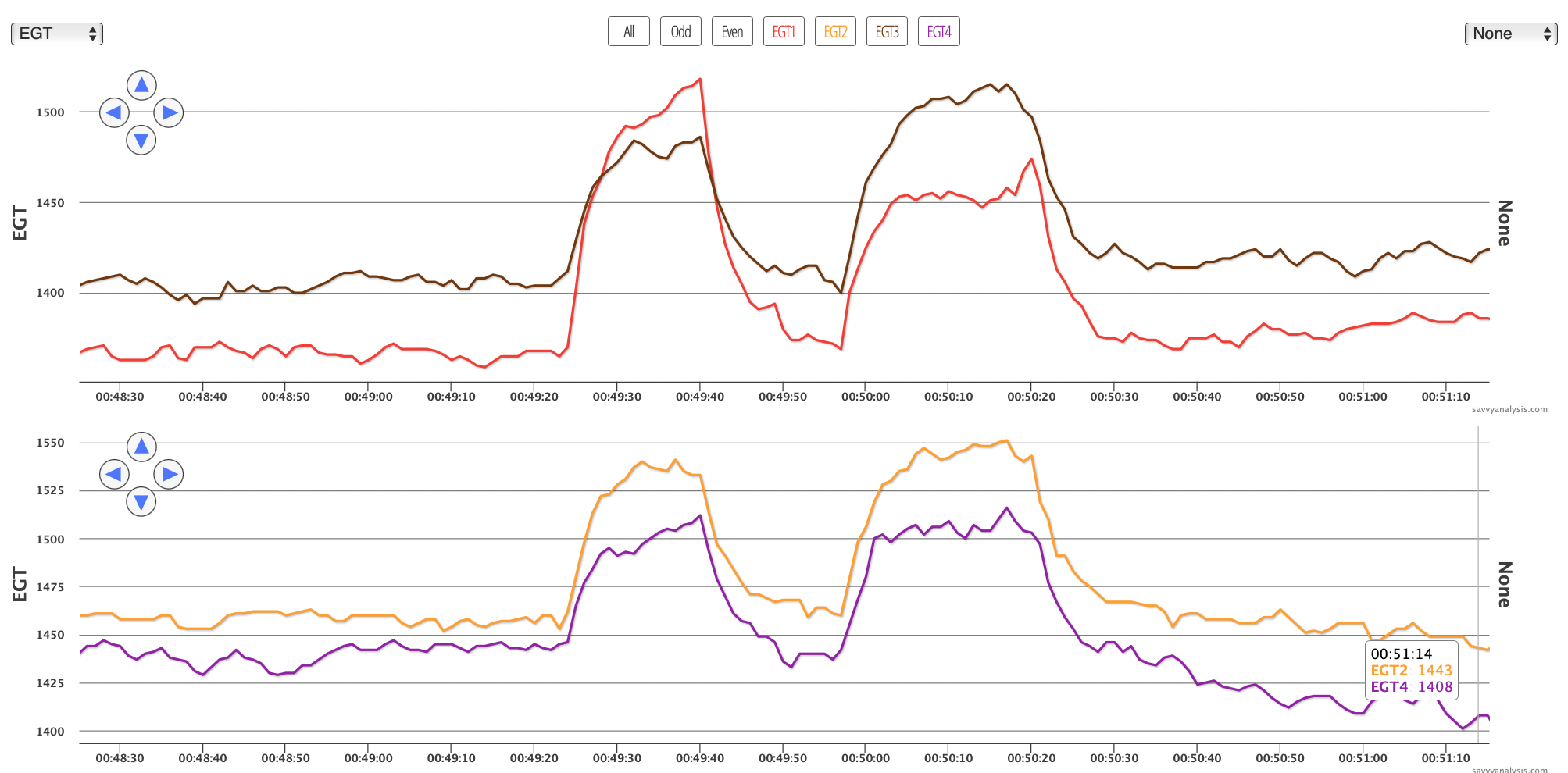
shows the EGTs for 2 and 4 are pretty consistent from first mag to second mag, while the EGTs for 1 and 3 are anything but. With standard mags it’s easier to tell bottom plugs from top plugs – the bottom plugs should be higher because the combustion event takes longer. With SureFlys we’ve seen dip switches cause all sorts of havoc in the EGT patterns. Just as we were formulating our theory, our client reported —
Aha! Just discovered that the #3 cylinder top spark plug accidentally had 2 copper gaskets on it, and the last time it was removed/replaced was the same day the O/H’d mag was installed….
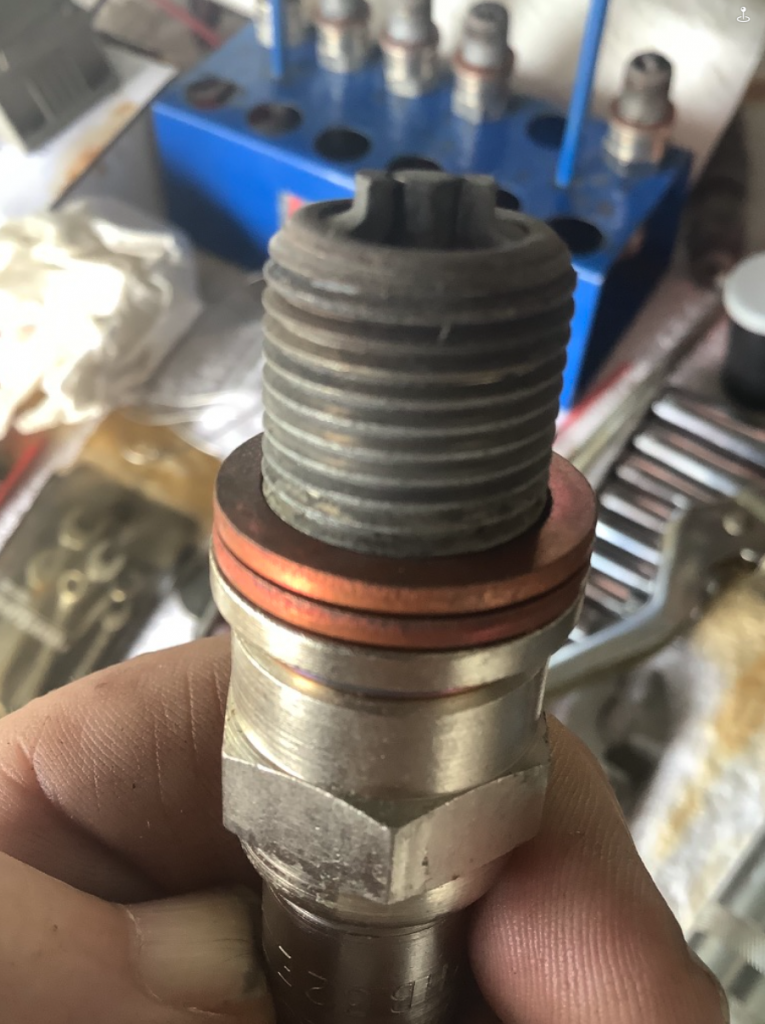
So if you ever wondered how much combustion would change if you had double gaskets on a plug, the answer is you’d rather not find out.
Next up is data from a Cirrus SR22 with a Continental IO-550 and data from an Avidyne with a 6 sec sample rate. EGT, CHT and FF.
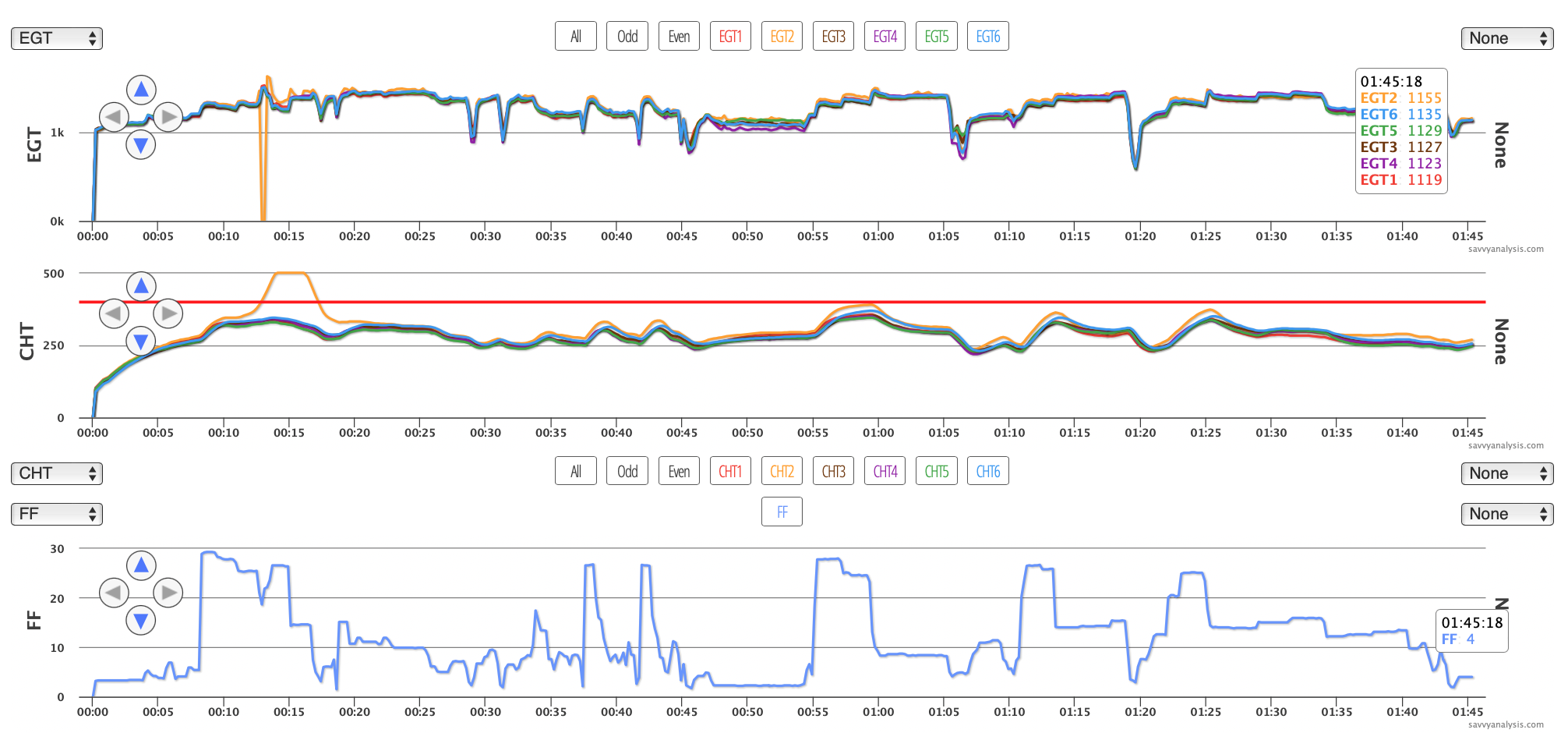
This is a textbook detonation event. Before we zoom in, I wanted you to notice that the flight continued for about 90 minutes more after the event. Ok, let’s zoom in. Nothing special about cursor placement.
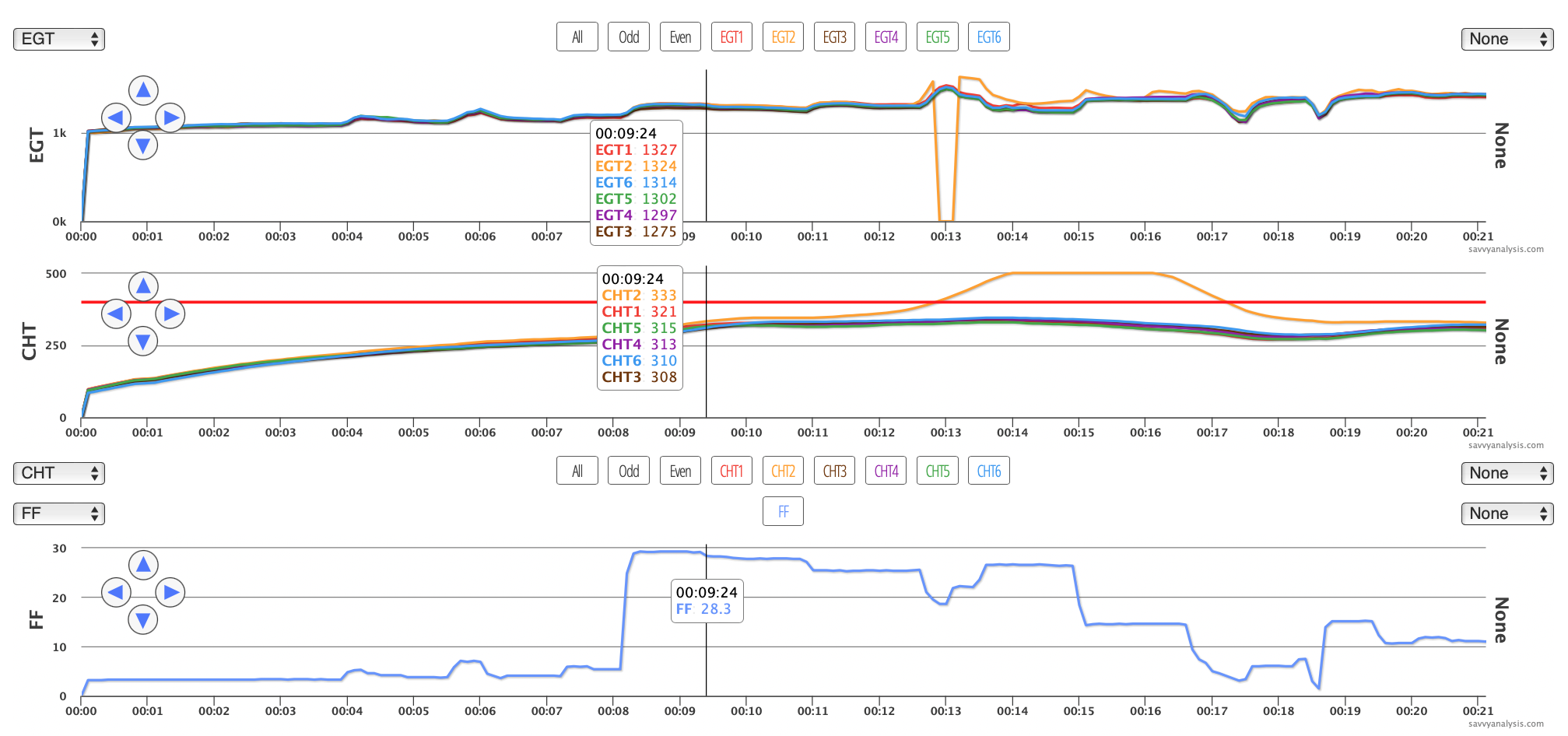
8 mins – takeoff power is applied
9 mins – all ok
10 mins – slight rise in CHT 2 begins
11 mins – CHT 2 still higher but not continuing to rise
12 mins – CHT 2 starting to runaway
13 mins – EGT 2 rises, then drops to zero (we suspect that the actual EGT was too high to register so it defaulted to zero) then back to 1634º, CHT continues runaway, pilot pulls the mixture but not enough to terminate the event
14 mins – CHT 2 flatlines at 500º – the highest value that Avidyne tracks (we suspect actual CHT was much higher)
15 mins – the pilot pulls the mixture – takes nearly two mins for the cyl to shed the heat and begin dropping
A few things seem surprising. First is that cyl 2 looks normal until it doesn’t. No clues in previous flights. Nothing abnormal in the taxi out or runup. Second is that it takes so long for the cylinder to cool. Third is that the cylinder continues in service for another 90 mins without a peep. Okay, EGT and CHT are high but no noticeable loss of performance.
Borescope inspection revealed lots of chatter at the piston circumference and some molten aluminum on some of the plugs. The damage that’s harder to see is what the extended high temperature did to weaken the head to barrel connection and the barrel and rings in general.
Also a little surprising that the other five cylinders had the same power setting and fuel flow and didn’t throw a fit like 2 did. Ultimately the decision was made to replace this cylinder, because it spent a lot of time well above its redline. You have to wonder if the pilot had come back and landed and not continued on for another 90 minutes, could the cylinder have been saved. We think in this case its goose was cooked by the 16 min mark.